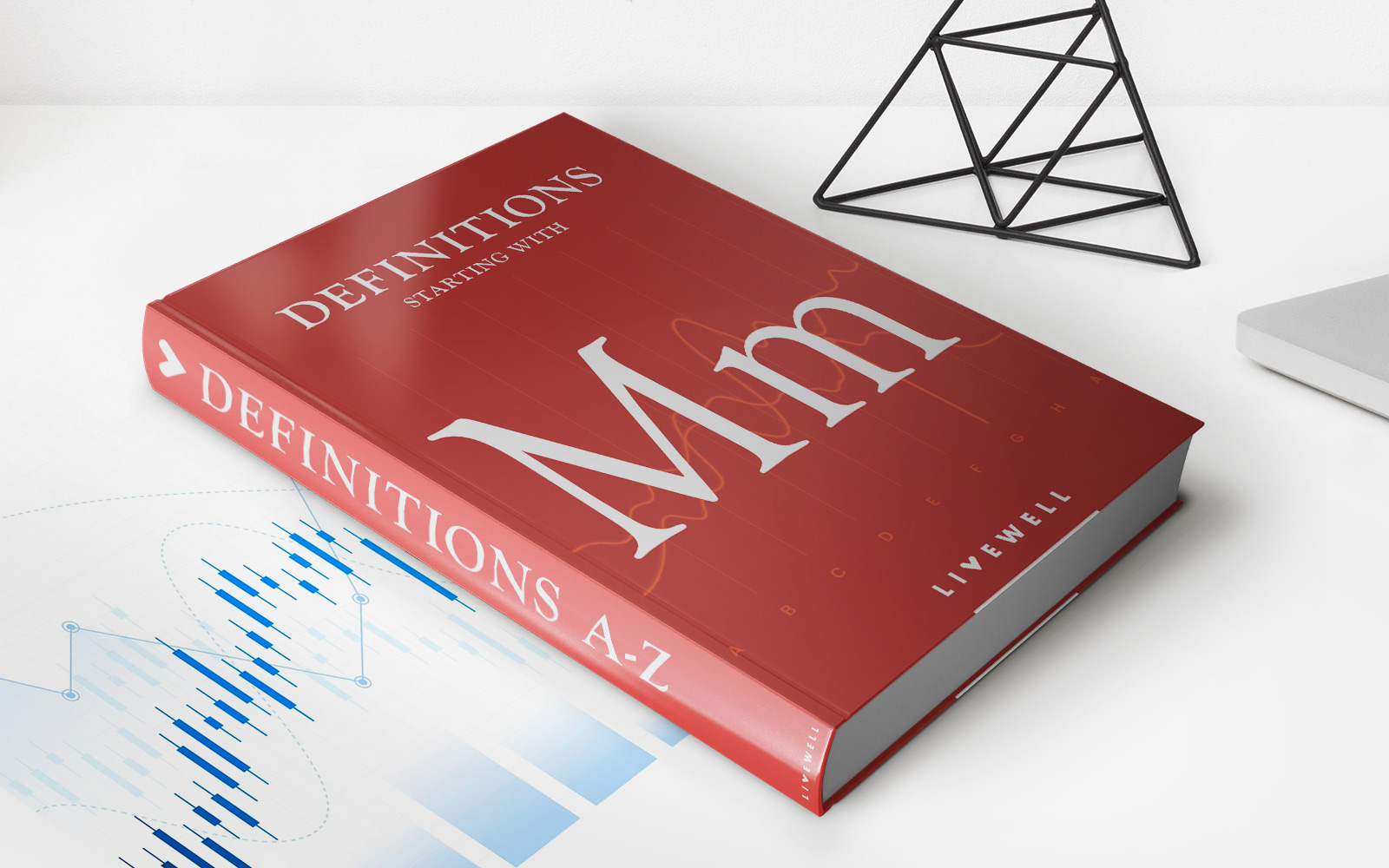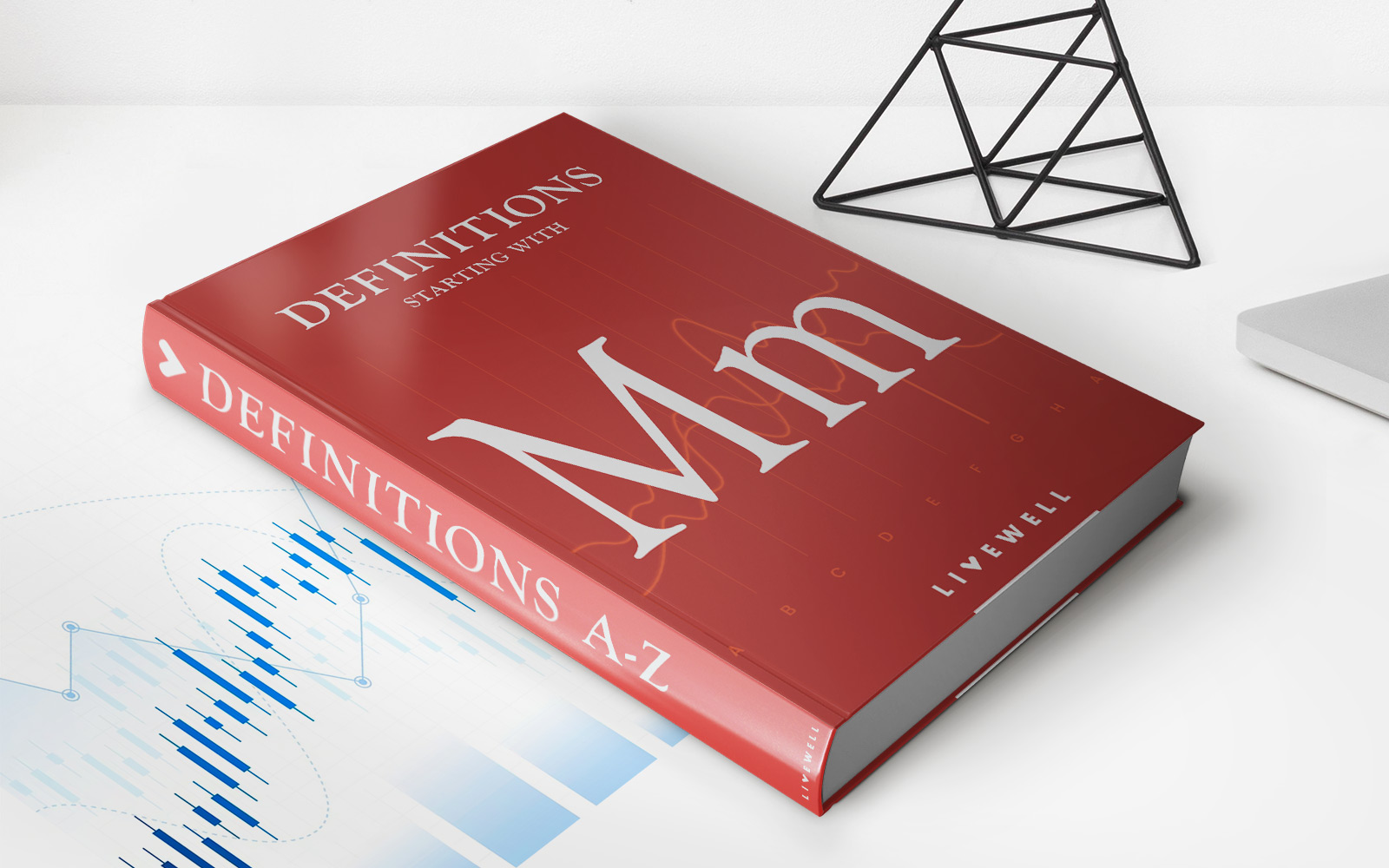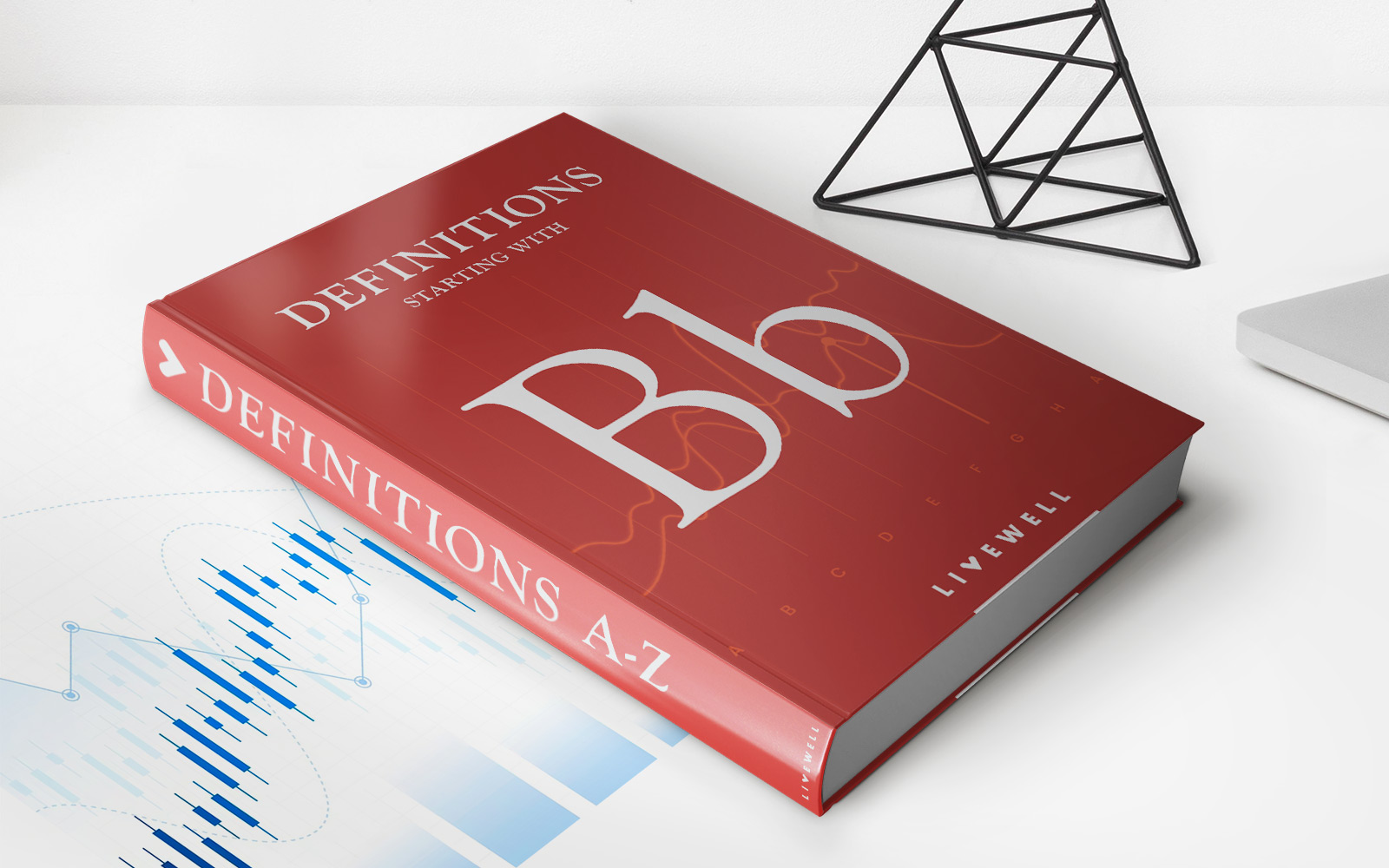Home>Finance>Why Would You Put Your Money In A Savings Account


Finance
Why Would You Put Your Money In A Savings Account
Modified: December 30, 2023
Discover the benefits of investing in a savings account and maximize your financial growth. Explore the world of finance and secure your money for future opportunities.
(Many of the links in this article redirect to a specific reviewed product. Your purchase of these products through affiliate links helps to generate commission for LiveWell, at no extra cost. Learn more)
Table of Contents
- Introduction
- What is a savings account?
- Benefits of a savings account
- Security and stability
- Liquidity
- Interest earnings
- Ease of access
- Factors to consider before opening a savings account
- Interest rates
- Fees and charges
- Minimum balance requirements
- Withdrawal restrictions
- Choosing the right savings account for you
- Comparing different banks and financial institutions
- Evaluating the terms and conditions
- Considering additional features and benefits
- Tips for maximizing your savings account
- Regular saving habits
- Monitoring and managing your account
- Reassessing your savings goals
- Conclusion
Introduction
Putting your money in a savings account is a smart financial move that can provide you with numerous benefits. Whether you’re saving for a specific goal, like a down payment on a house or a dream vacation, or simply looking to grow your wealth over time, a savings account offers a secure and convenient way to achieve your financial objectives.
A savings account is a type of deposit account offered by banks and financial institutions that allows individuals to deposit and accumulate funds while earning interest on their balance. Unlike a checking account, which is often used for daily transactions, a savings account is designed for long-term saving and offers a range of advantages that make it an attractive option for individuals looking to build their wealth.
In this article, we will explore the various benefits of putting your money in a savings account, including security and stability, liquidity, interest earnings, and ease of access. We will also discuss important factors to consider before opening a savings account, such as interest rates, fees and charges, minimum balance requirements, and withdrawal restrictions. Lastly, we will provide tips on how to maximize the potential of your savings account and achieve your savings goals.
So, if you’re looking for a reliable and effective way to grow your savings, keep reading to discover why a savings account may be the right choice for you.
What is a savings account?
A savings account is a type of deposit account offered by banks and financial institutions that allows individuals to securely store and grow their money. When you open a savings account, you deposit funds into the account and the bank pays you interest on your balance over time.
Savings accounts typically offer a lower interest rate compared to other investment options, such as stocks or bonds, but they provide a higher level of security and stability. They are considered to be one of the safest places to keep your money.
One of the key features of a savings account is that it offers liquidity, meaning you can easily access your funds whenever you need them. Unlike some other types of investments that may have withdrawal restrictions or penalties, a savings account allows you to withdraw your money at any time without incurring any additional costs.
Another important aspect of a savings account is that it offers interest earnings. The bank pays you a certain percentage of interest on your balance, usually calculated on a daily or monthly basis. While the interest rates may vary depending on the financial institution and prevailing market conditions, savings account interest rates are generally modest but still provide a way to grow your money over time.
Lastly, a savings account offers ease of access. You can manage your account online, make deposits and withdrawals at the bank branch or through ATMs, and some banks even offer mobile banking apps that allow you to conveniently access your savings account from anywhere at any time.
Overall, a savings account is a fundamental financial tool that provides a safe and convenient way to save and grow your money. It offers security, liquidity, interest earnings, and ease of access, making it a popular choice for individuals looking to achieve their financial goals.
Benefits of a savings account
A savings account offers several benefits that make it an attractive option for individuals looking to save and grow their money. Let’s explore some of these benefits:
Security and stability:
One of the biggest advantages of a savings account is the level of security and stability it provides. When you deposit your money into a savings account, it is protected by the financial institution and insured by government programs, such as the FDIC in the United States. This means that even if the bank faces financial difficulties, your money is safe.
Liquidity:
A savings account offers high liquidity, which means you can easily access your funds when needed. Unlike other forms of investment that may have lock-in periods or penalties for early withdrawal, you can withdraw money from your savings account at any time without facing any substantial costs.
Interest earnings:
One of the main advantages of a savings account is that it allows your money to grow over time through interest earnings. While savings account interest rates may be lower compared to other investment options, they are generally higher than those offered by traditional checking accounts. This means that your money can accumulate and earn interest over time, helping you achieve your financial goals faster.
Ease of access:
Managing a savings account is convenient and user-friendly. Most banks provide online and mobile banking services, allowing you to access your account information, make deposits, and initiate withdrawals from the comfort of your home or on the go. This accessibility ensures that you can easily manage and monitor your savings account, keeping you in control of your finances.
In summary, a savings account offers security, stability, liquidity, interest earnings, and ease of access. It provides a reliable and convenient way to save and grow your money, making it an essential tool for anyone looking to achieve their financial goals.
Security and stability
When it comes to storing your hard-earned money, security and stability are of utmost importance. This is where a savings account shines, offering a high level of security and stability for your funds.
First and foremost, when you deposit money into a savings account, it is protected by the financial institution. Banks are highly regulated and closely monitored by regulatory authorities, ensuring that they follow best practices and adhere to stringent security protocols. In addition, most banks have security measures in place, such as encryption and fraud detection systems, to safeguard your account from unauthorized access and fraudulent activities.
Furthermore, savings accounts are typically insured by government programs, such as the Federal Deposit Insurance Corporation (FDIC) in the United States. Under the FDIC, your savings account deposits are insured up to $250,000 per depositor, per bank. This means that even if the bank were to face financial difficulties or go out of business, your deposited funds are protected.
Compared to other investment options, such as stocks or real estate, savings accounts offer a much higher degree of stability. While the value of stocks and real estate can fluctuate dramatically based on market conditions, the principal amount deposited in a savings account remains safe and intact. This stability provides peace of mind, knowing that your money is not subject to market volatility.
In times of economic uncertainty or market downturns, having a savings account can be particularly reassuring. It serves as a reliable financial resource, giving you a sense of security knowing that your funds are readily available and protected.
Overall, the security and stability offered by a savings account make it an attractive option for individuals looking to protect and preserve their money. Whether you’re saving for emergencies, future expenses, or long-term goals, a savings account provides a safe and stable environment for your funds to grow.
Liquidity
When it comes to managing your finances, having access to your funds when you need them is crucial. This is where the liquidity of a savings account proves to be highly advantageous.
Liquidity refers to the ease with which an asset can be converted into cash without incurring substantial costs or penalties. A savings account offers a high level of liquidity, allowing you to access your funds whenever you need them.
Unlike certain types of investments, such as certificates of deposit (CDs) or retirement accounts, which may have strict withdrawal restrictions or early withdrawal penalties, a savings account provides you with the flexibility to withdraw your money at any time without facing any substantial costs or penalties. This means that if you’re faced with an unexpected expense or financial emergency, you can quickly access your savings account funds to cover the necessary expenses.
In addition to easy access to your money, a savings account also offers multiple avenues for withdrawal. Most banks provide convenient options for accessing your funds, such as ATM withdrawals, online transfers, and in-person withdrawals at the bank branch. Furthermore, some banks even offer mobile banking apps that allow you to manage your savings account and make withdrawals on the go.
This liquidity is particularly beneficial for short-term savings goals or expenses that require immediate access to funds. Whether you’re saving for a vacation, a down payment on a house, or unexpected medical expenses, having a liquid savings account ensures that you have the financial flexibility to handle these situations.
In times of economic uncertainty or financial volatility, having access to liquid funds can provide a sense of security and peace of mind. It allows you to navigate through unexpected financial challenges and make necessary adjustments to your budget without worrying about withdrawal restrictions or penalties.
Overall, the liquidity offered by a savings account makes it a highly practical and flexible financial tool. It ensures that your funds are readily accessible, empowering you to tackle any unexpected expenses or financial emergencies that come your way.
Interest earnings
One of the key advantages of a savings account is the opportunity to earn interest on your balance, allowing your money to grow over time. While savings account interest rates may not be as high as those offered by riskier investments, such as stocks or bonds, they still provide a way to increase your savings.
When you deposit money into a savings account, the bank uses your funds to make loans and investments. In return for allowing the bank to use your money, they pay you a certain percentage of interest on your balance. The interest is typically calculated on a daily or monthly basis and added to your account at the end of the specified period.
The interest rates on savings accounts may vary depending on the financial institution and prevailing market conditions. Generally, the interest rates offered by online banks tend to be more competitive compared to traditional brick-and-mortar banks. It’s important to compare rates and consider the potential impact on your overall savings growth.
While the interest earned on a savings account may seem modest compared to the potential gains from riskier investments, such as stocks, it offers a safe and reliable way to grow your money. Plus, the power of compound interest should not be underestimated. Over time, even a small interest rate can have a significant impact on your savings.
Another benefit of earning interest on a savings account is that it provides a passive income source. Unlike actively managing a business or engaging in complex investment strategies, interest earnings from a savings account require minimal effort on your part. Your money works for you while you focus on other aspects of your financial life.
In addition to the interest earnings, some banks may offer promotional rates, bonus interest, or tiered interest rates based on your account balance. These features can further enhance your savings growth potential.
Overall, the interest earnings from a savings account provide a way to supplement your savings and help you achieve your financial goals. While the returns may not be astronomical, the stability and low-risk nature of a savings account make it an attractive option for individuals looking for a reliable way to grow their money over time.
Ease of access
When it comes to managing your finances, having easy access to your funds is essential. A savings account offers a high level of convenience and accessibility, making it a reliable financial tool for everyday use.
One of the primary advantages of a savings account is the ease of access it provides. Unlike other types of investments that may have lock-in periods or restrictions on when you can withdraw your funds, a savings account allows you to access your money whenever you need it.
Most banks offer various channels for managing your savings account, including online banking, mobile apps, ATM withdrawals, and in-person visits to bank branches. This multi-channel accessibility ensures that you can conveniently access and manage your savings account from anywhere, at any time.
Online banking allows you to view your account balance, make transfers, and monitor your savings account activity from the comfort of your own home or while you’re on the go. Many banks also offer mobile banking apps, which provide you with the flexibility to manage your savings account using your smartphone or tablet. With just a few taps, you can check your balance, deposit funds, or initiate transfers with ease.
In addition to digital access, savings accounts also offer the convenience of ATM withdrawals. With an ATM card linked to your savings account, you can withdraw cash from ATMs located across the country or even internationally. This ensures that you have access to your funds whenever you need cash for daily expenses or emergencies.
Furthermore, many banks offer the option of making in-person visits to bank branches. Whether you need to deposit funds, discuss account details with a bank representative, or request specific services, bank branches provide a physical presence that caters to your banking needs.
The ease of access provided by a savings account makes it an ideal choice for managing your day-to-day finances. It eliminates the hassle of carrying large amounts of cash and provides a secure and convenient way to conduct transactions and manage your funds.
Overall, the ease of access offered by a savings account ensures that your money is conveniently accessible whenever you need it. Whether through online banking, mobile apps, ATMs, or bank branches, you have the flexibility to manage your savings account according to your preferences and lifestyle.
Factors to consider before opening a savings account
Before you open a savings account, it’s essential to consider several factors to ensure you choose the right account that aligns with your financial goals and needs. Here are some key factors to consider:
Interest rates:
The interest rate is a crucial factor to consider when opening a savings account. It determines the amount of interest you’ll earn on your balance over time. Compare the interest rates offered by different banks and financial institutions to find an account that offers competitive rates and maximizes your savings potential.
Fees and charges:
Be aware of any fees or charges associated with the savings account. Some banks may charge monthly maintenance fees, service fees for specific transactions, or penalties for not maintaining a minimum account balance. Carefully review the fee structure and choose an account that minimizes these charges to optimize your savings.
Minimum balance requirements:
Many banks have minimum balance requirements for savings accounts. Consider whether you can meet these requirements consistently, as falling below the minimum balance might result in additional fees or a change in the interest rate offered. Look for an account with minimum balance requirements that align with your financial situation.
Withdrawal restrictions:
Some savings accounts may impose limitations on the number of withdrawals you can make per month or have restrictions on certain types of withdrawals, such as transferring funds to another bank. Evaluate these withdrawal restrictions to ensure they align with your financial needs and spending habits.
Customer service and support:
Consider the quality of customer service and support provided by the bank or financial institution. A responsive and helpful customer service team can assist you with any inquiries or issues that may arise during your banking experience.
Extras and additional features:
Some banks offer additional features and benefits with their savings accounts, such as rewards programs, ATM fee reimbursements, or special discounts on other financial products. Take these extras into account when selecting a savings account, as they can enhance your overall banking experience.
By carefully considering these factors, you can make an informed decision when choosing a savings account that aligns with your financial goals and provides the best value for your money. Review the terms and conditions of different accounts, compare their features, and select an account that suits your needs and preferences.
Interest rates
Interest rates play a crucial role in the overall appeal and profitability of a savings account. When choosing a savings account, it’s important to consider the interest rates offered by different banks and financial institutions. Here’s why interest rates are a significant factor:
Earning potential:
The interest rate on a savings account determines the amount of money you can earn on your balance over time. Higher interest rates provide greater earning potential, allowing your savings to grow faster. Even a small difference in interest rates can have a significant impact on your savings over the long term.
Compound interest:
Savings accounts typically compound interest, meaning the interest is calculated on both the initial deposit and any accumulated interest. This compounding effect can lead to exponential growth of your savings over time. Higher interest rates result in more substantial compound interest earnings, accelerating the growth of your savings.
Competitiveness:
The interest rates offered by different banks may vary. Banks with competitive interest rates are often more attractive as they provide the opportunity to maximize your savings. It’s important to compare rates from various banks and financial institutions to ensure you’re getting the best return on your savings.
Relationship to inflation:
Interest rates also play a role in protecting your savings from the impact of inflation. Inflation erodes the purchasing power of your money over time. By earning interest rates that outpace inflation, you can maintain the value of your savings and ensure your money retains its worth in the future.
Considerations:
While high interest rates may seem enticing, it’s important to consider other factors as well. Some banks may offer high introductory rates that decrease after a specific period. Additionally, banks may require a minimum account balance to earn the advertised interest rate. Take into account your financial situation and ensure you can meet any requirements or maintain the necessary balance to qualify for the desired interest rate.
Overall, interest rates are a significant factor to consider when choosing a savings account. Higher interest rates can boost your savings and help you reach your financial goals faster. By comparing rates and understanding the terms and conditions associated with different accounts, you can select a savings account that offers competitive interest rates and aligns with your long-term savings objectives.
Fees and charges
When opening a savings account, it’s important to consider the fees and charges associated with the account. Understanding these costs can help you make an informed decision, select an account that suits your financial needs, and maximize your savings. Here’s why fees and charges are an important factor:
Maintenance fees:
Many banks charge monthly or quarterly maintenance fees for their savings accounts. These fees can vary significantly between institutions. It’s crucial to be aware of these charges and choose an account with reasonable maintenance fees or accounts that offer fee waivers if you meet certain criteria, such as maintaining a minimum account balance or having other accounts with the bank.
Transaction fees:
Some savings accounts may impose fees for specific transactions, such as fees for exceeding a certain number of withdrawals per month or fees for transferring funds to another bank. These transaction fees can quickly add up, especially if you frequently move money in and out of your savings account. Consider your transaction needs and compare the fees associated with different accounts to find one that aligns with your usage patterns.
Minimum balance requirements:
Many banks require a minimum account balance to avoid maintenance fees or to qualify for higher interest rates. Falling below the minimum balance requirement may result in fees or lower interest rates. It’s important to assess your financial situation and choose an account that has a minimum balance requirement you can comfortably maintain without incurring any additional costs.
ATM fees:
If your savings account comes with an ATM card, be aware of any fees associated with using ATMs that are out of your bank’s network. ATM fees can accumulate, especially when traveling or if you don’t have access to your bank’s ATM network. Consider banks that reimburse or have a wide network of ATMs to minimize these fees.
Overdraft fees:
Although savings accounts are not typically used for overdraft protection, it’s essential to understand the overdraft policies and associated fees if you link your savings account to other accounts. Unintentional overdrafts can lead to significant charges, so knowing the overdraft fees can help you avoid unnecessary expenses.
By carefully reviewing the fees and charges associated with a savings account, you can select an account that minimizes costs and maximizes your savings potential. Take the time to compare the fee structures of different banks and assess your usage patterns to find an account that offers the best value for your money.
Minimum balance requirements
When considering a savings account, it’s important to understand the minimum balance requirements associated with the account. Minimum balance requirements refer to the minimum amount of money that must be maintained in the account to avoid fees or qualify for certain benefits. Here’s why considering these requirements is essential:
Avoiding fees:
Many banks impose maintenance fees on savings accounts if the account balance falls below a specified minimum threshold. By understanding the minimum balance requirement, you can ensure that you maintain the necessary funds in your account to avoid these fees. Choosing an account with a minimum balance requirement you can comfortably meet will help you save money on unnecessary charges.
Qualifying for additional benefits:
Some banks offer higher interest rates, additional perks, or special benefits for customers who maintain a minimum account balance. These benefits could include fee waivers, bonus interest rates, or access to premium features. If you’re interested in these benefits, selecting an account with a minimum balance requirement that suits your financial situation is crucial.
Assessing your financial capabilities:
Understanding the minimum balance requirement allows you to assess whether you can comfortably maintain that balance without incurring further costs. Consider your income, expenses, and savings goals to determine the appropriate minimum balance requirement for your needs. If the requirement is too high, it may put a strain on your finances and hinder your ability to save effectively.
Evaluating penalty charges:
In addition to maintenance fees, some banks may penalize you for falling below the minimum balance requirement. These penalties can be in the form of reduced interest rates, limited account access, or additional fees. Understanding these penalties will help you avoid any surprises and select an account that aligns with your financial capabilities.
The impact on savings growth:
Keeping a higher account balance above the minimum requirement can accelerate your savings growth, as it allows you to earn more interest on your funds. If you’re committed to building your savings and have the means to maintain a higher balance, opting for an account with a higher minimum balance requirement may be worthwhile.
Before opening a savings account, carefully evaluate the minimum balance requirements of different banks and choose an account that suits your financial situation. Consider your ability to meet the requirement consistently, avoid unnecessary fees, and maximize your savings potential. By selecting an account with a minimum balance requirement that aligns with your capabilities and goals, you can effectively manage your finances and work towards your savings objectives.
Withdrawal restrictions
One factor to consider when choosing a savings account is the withdrawal restrictions imposed by the bank or financial institution. Withdrawal restrictions refer to limitations or rules regarding how and when you can access your funds. Understanding these restrictions is important to ensure that the account aligns with your financial needs and goals. Here are some key points regarding withdrawal restrictions:
Number of withdrawals:
Some savings accounts have a limit on the number of withdrawals you can make per month. This limit is often imposed to comply with banking regulations and manage liquidity. Exceeding the allowed number of withdrawals may result in fees or a change in the account type or interest rate. Consider your transaction requirements and select an account that allows for a sufficient number of withdrawals to meet your needs.
Transfer restrictions:
Certain savings accounts may have restrictions on transferring funds to another bank or account. This may apply to online transfers, wire transfers, or even checks. If you anticipate needing to transfer funds frequently or have external accounts you would like to link to your savings account, ensure that the account you choose allows for these transfers without significant limitations or fees.
Notice period:
In some cases, savings accounts may require a notice period before making a withdrawal. This means you need to notify the bank a certain number of days in advance before withdrawing funds. Notice period requirements are uncommon for regular savings accounts but may be applicable to specific types of accounts, such as notice savings accounts or certificates of deposit (CDs). Consider your need for immediate access to funds and choose an account that aligns with your liquidity requirements.
ATM and debit card access:
Savings accounts often come with ATM and/or debit card access, which allows you to make withdrawals at ATMs or make purchases using your account funds. However, check if there are any restrictions on ATM or debit card usage. Some accounts may limit the number of ATM withdrawals or impose fees for using ATMs outside of their network. Understanding these restrictions will ensure that you can conveniently access your funds whenever needed.
Emergency access:
Considerations should be made for emergencies or unexpected situations where you may need immediate access to your savings. Choose an account that allows for quick and easy access to funds during critical times, without facing excessive penalties or restrictions.
By evaluating the withdrawal restrictions associated with different savings accounts, you can select an account that meets your transaction needs and aligns with your financial goals. Consider the frequency and methods of withdrawals you anticipate, and ensure that the account you choose provides the flexibility and access you require to manage your funds effectively.
Choosing the right savings account for you
Choosing the right savings account is an important decision that can have a significant impact on your financial journey. With numerous options available, it’s essential to consider your individual needs and preferences to find an account that aligns with your goals. Here are some key factors to consider when choosing the right savings account for you:
Interest rates and APY:
Compare the interest rates and annual percentage yields (APY) offered by different banks. Higher interest rates allow your savings to grow faster over time, providing a better return on your investment. Consider whether you prefer a fixed or variable interest rate, as well as the potential impact of compounding on your savings.
Fees and charges:
Review the fee structure associated with each savings account. Look for accounts with minimal fees, such as maintenance fees and transaction fees, to avoid unnecessary costs. Be aware of any penalties for falling below the minimum balance requirement or overdrawing your account.
Minimum balance requirements:
Consider your financial capabilities and assess whether you can comfortably maintain the minimum balance required by the account you’re considering. Falling below the minimum balance may lead to fees or a change in the interest rate offered. Choose an account with a minimum balance requirement that aligns with your financial situation.
Access to funds:
Evaluate the accessibility of your funds. Consider the convenience of online banking platforms, mobile apps, ATM access, and in-person banking services. Choose an account that provides the level of access you desire, ensuring that it aligns with your lifestyle and preferences.
Add-on features:
Some savings accounts offer additional features and benefits, such as rewards programs, ATM fee reimbursements, or linked checking accounts. Consider these features and assess their importance to your overall banking experience.
Customer service and support:
Research the reputation and quality of customer service provided by the bank or financial institution. Prompt and helpful customer support can greatly enhance your banking experience, ensuring that you receive the assistance you need when it matters.
FDIC or NCUA insurance:
Ensure that the savings account you choose is covered by the Federal Deposit Insurance Corporation (FDIC) or the National Credit Union Administration (NCUA) insurance. This insurance protects your funds in the event that the bank or credit union fails.
By considering these factors, you can find the savings account that suits your unique financial needs and goals. Remember to assess your priorities, compare offerings from multiple banks, and choose an account that empowers you to effectively manage and grow your savings over time.
Comparing different banks and financial institutions
When choosing a savings account, it’s important to consider and compare the offerings of different banks and financial institutions. Each institution may have varying features, benefits, and terms associated with their savings accounts. Here are some key factors to consider when comparing different banks:
Interest rates:
Compare the interest rates offered by different banks. Higher interest rates can make a significant difference in the growth of your savings over time. Look for banks that offer competitive rates that align with your financial goals.
Fees and charges:
Research and compare the fee structures of different banks. Consider maintenance fees, transaction fees, and penalties for falling below minimum balance requirements. Opt for banks with minimal fees or fee waiver options to avoid unnecessary costs.
Minimum balance requirements:
Assess the minimum balance requirements set by each bank. Consider whether you can comfortably maintain the required balance consistently to avoid fees and qualify for certain benefits. Select a bank with a minimum balance requirement that suits your financial situation.
Branch and ATM network:
Consider the availability of branches and ATMs of each bank. Evaluate the convenience of their branch locations and the size and accessibility of their ATM network. A bank with a wide network can provide greater accessibility to your funds.
Online and mobile banking:
Consider the functionality and user-friendliness of each bank’s online and mobile banking platforms. Look for features such as easy fund transfers, bill payment options, and intuitive interfaces. Choose a bank with online and mobile banking capabilities that align with your preferences.
Additional features and benefits:
Some banks offer additional features and benefits with their savings accounts, such as rewards programs, linked checking accounts, or special discounts. Evaluate these extras and determine if they align with your financial needs and goals.
Customer service:
Consider the quality of customer service provided by each bank. Look for banks with a reputation for helpful and responsive customer support. Good customer service can make a significant difference when you need assistance with your savings account or have questions about your finances.
Financial stability and reputation:
Assess the financial stability and reputation of each bank. Look for established banks with a strong track record and positive customer reviews. This will give you confidence in the reliability and security of your savings account.
By comparing these factors across different banks and financial institutions, you can make an informed decision and choose the one that offers a savings account that best meets your financial needs, goals, and preferences.
Evaluating the terms and conditions
When selecting a savings account, it’s crucial to thoroughly evaluate the terms and conditions associated with the account. Understanding the fine print ensures that you are aware of any restrictions, limitations, or requirements that may affect your banking experience. Here are key considerations when evaluating the terms and conditions:
Interest calculation and compounding:
Review how the bank calculates and compounds interest on your savings account. Understand whether the interest is calculated daily, monthly, or annually, and how it is added to your account balance. This knowledge helps you estimate your potential earnings and assess the impact of interest on your savings over time.
Account closure and fees:
Examine the terms and conditions related to closing the account, including any associated fees or penalties. Some banks may charge a fee for closing an account within a certain time period or require notifying them in advance. Being aware of these factors can help you make an informed decision and avoid any unexpected costs.
Transaction limitations:
Take note of any limitations on the number of transactions you can make in a given period. Understand whether there are restrictions on withdrawals, transfers, or types of transactions. Consider whether these limitations align with your banking habits and needs.
Deposit and withdrawal processing times:
Understand how long it takes for deposits and withdrawals to process. Banks may have different processing times, which can impact your access to funds and the timing of interest earned. Consider whether the processing times suit your financial requirements and any upcoming financial obligations.
Change in terms:
Pay attention to whether the terms and conditions include provisions allowing the bank to modify the terms at their discretion. This could include changes to fees, interest rates, or account features. Ensure that you are comfortable with the bank’s ability to make changes and that they notify you of any modifications in a timely manner.
Limitations on account access:
Be aware of any restrictions related to accessing your account, such as limitations on online or mobile banking access or requirements for in-person transactions. Consider whether these limitations align with your preferred mode of account management and access.
Expiration of promotional offers:
If the account comes with promotional offers, such as bonus interest rates or cash incentives, understand when these offers expire. Evaluate whether the terms and conditions change after the promotional period ends and determine if the account remains advantageous beyond the initial offer.
By carefully evaluating the terms and conditions of a savings account, you can ensure that you have a comprehensive understanding of the account’s features, limitations, and potential fees. This knowledge allows you to make an informed decision and select an account that best meets your financial goals and preferences.
Considering additional features and benefits
When choosing a savings account, it’s important to consider the additional features and benefits offered by different banks. These added perks can enhance your banking experience and provide you with extra value. Here are key factors to consider when evaluating additional features and benefits:
Rewards programs:
Some banks offer rewards programs for their savings accounts, where you can earn points or cashback on certain transactions. These rewards can be redeemed for merchandise, gift cards, or even deposited directly into your savings account. Evaluate the rewards program and determine if it aligns with your spending and saving habits.
ATM fee reimbursements:
Check if the bank offers reimbursement for ATM fees incurred when using ATMs outside of their network. ATM fee reimbursements can help save you money and ensure convenient access to your funds, especially when traveling or in areas where your bank’s ATMs are not readily available.
Linked checking accounts:
Consider whether the bank allows for linking your savings account to a checking account. This can facilitate easy transfers between accounts and streamline your banking experience. Linked accounts can provide added flexibility and the ability to manage your finances more effectively.
Financial planning tools:
Some banks offer financial planning tools and resources to help you better manage your savings goals. These tools can include budgeting calculators, goal trackers, or personalized financial advice. Assess whether the bank provides resources that align with your financial planning needs.
Round-up programs:
Round-up programs automatically round up your everyday purchase amounts and deposit the difference into your savings account. This feature enables you to save small amounts regularly, without even thinking about it. Consider whether the bank offers this type of program to help boost your savings effortlessly.
Relationship bonuses:
Check if the bank provides relationship bonuses for having multiple accounts or maintaining a long-term relationship with the bank. These bonuses can include higher interest rates, fee waivers, or special rewards. Evaluate whether your existing banking relationship can benefit from these incentives.
Educational resources:
Some banks offer educational resources, such as articles, webinars, or financial literacy programs. These resources can help you enhance your financial knowledge and make more informed decisions. Consider whether the bank provides these educational tools to support your financial journey.
By considering additional features and benefits offered by different banks, you can select a savings account that provides added value and meets your specific needs and preferences. Determine which features are most relevant to your financial goals and select an account that provides the tools and benefits to support your financial success.
Tips for maximizing your savings account
A savings account is a valuable tool for building your financial future. To make the most of your savings account and achieve your financial goals, consider incorporating these tips:
1. Set up automatic transfers:
Automate your savings by setting up recurring transfers from your checking account to your savings account. This ensures consistent savings without the need for manual transfers, helping you build your savings effortlessly.
2. Create a budget:
Develop a budget to track your income and expenses. By carefully managing your spending and identifying areas where you can cut back, you can free up more money to contribute to your savings account.
3. Prioritize savings:
Make saving a priority in your overall financial plan. Treat it as a necessary expense and allocate a portion of your income specifically towards your savings goals, ensuring that your savings account grows consistently.
4. Take advantage of compound interest:
Let the power of compound interest work in your favor. Leave your savings untouched as much as possible to allow the interest to compound over time, generating even more wealth for your future.
5. Review and compare interest rates:
Regularly review and compare interest rates offered by different banks. If you find a higher interest rate elsewhere, consider transferring your funds to take advantage of the better earning potential.
6. Monitor and track your savings:
Keep an eye on your savings account regularly. Monitor your transactions, track your progress towards your savings goals, and ensure that you’re staying on track. This helps you stay motivated and make adjustments if necessary.
7. Avoid unnecessary fees:
Be mindful of any fees associated with your savings account. Maintain the minimum balance required to avoid maintenance fees, and minimize transaction fees by adhering to any withdrawal limitations or restrictions.
8. Reassess your savings goals:
Regularly review and reassess your savings goals. As your circumstances change, adjust your goals accordingly and reallocate your savings to align with your new objectives.
9. Explore higher-yield options:
Consider exploring investment options that offer higher yields while still maintaining an acceptable level of risk for your financial situation. Consult with a financial advisor to determine which investment options align with your risk tolerance and savings goals.
10. Stay committed and disciplined:
Consistency and discipline are key to maximizing your savings account. Stick to your savings plan, avoid impulse spending, and stay committed to building your financial security for the long term.
By following these tips, you can optimize the potential of your savings account and work towards achieving your financial aspirations. Tailor these suggestions to your personal circumstances and maintain a proactive approach to your savings journey.
Regular saving habits
Developing regular saving habits is essential for maximizing the growth of your savings account and achieving your financial goals. Here are some key tips to help you establish consistent saving habits:
Create a savings goal:
Start by setting a savings goal. Having a specific target will provide you with motivation and a clear purpose for saving. Whether it’s saving for a down payment on a house, a dream vacation, or building an emergency fund, having a goal in mind will drive your saving habits.
Pay yourself first:
Treat savings like any other bill and prioritize it in your budget. Allocate a portion of your income to savings right when you receive it. By paying yourself first, you ensure that saving becomes a non-negotiable expense.
Automate your savings:
Make saving effortless by setting up automatic transfers from your checking account to your savings account. This way, a fixed amount is automatically moved to your savings account on a regular basis, making it easier to stick to your saving goals.
Track your expenses:
Keep a record of your expenses to identify areas where you can cut back and save money. Use budgeting tools or smartphone apps to track your spending habits and pinpoint areas where you can make adjustments to allocate more towards your savings.
Cut back on discretionary spending:
Examine your discretionary expenses and find opportunities to reduce them. This could include dining out less frequently, cutting back on unnecessary subscriptions, or finding alternative ways to entertain yourself without overspending. Redirect the money saved towards your savings account.
Build an emergency fund:
Set aside a portion of your savings specifically for emergencies. Having an emergency fund will provide you with financial security and peace of mind. Aim to save three to six months’ worth of living expenses to cover unexpected situations.
Make saving a habit:
Consistency is key to achieving your savings goals. Treat saving as a routine habit, just like brushing your teeth or exercising. Make it a non-negotiable part of your financial routine and consistently contribute to your savings account, regardless of the amount.
Track your progress:
Regularly monitor and track the growth of your savings. Seeing your progress will motivate you to continue saving and make adjustments if needed. Celebrate milestones along the way to stay motivated and recognize your accomplishments.
Reassess and adjust:
Periodically reassess your financial situation and adjust your savings goals and habits accordingly. Life circumstances change, and your savings priorities may evolve as well. Be flexible and adapt your savings plan to align with your current needs and aspirations.
By incorporating these regular saving habits into your financial routine, you can develop a strong foundation for long-term financial success. Consistency, discipline, and a clear focus on your goals will lead to the growth and achievement you desire.
Monitoring and managing your account
Once you have opened a savings account, it is important to actively monitor and manage it to maximize your savings potential. Regularly monitoring and managing your account ensures that you stay on track with your financial goals and make any necessary adjustments along the way. Here are some key tips for effectively monitoring and managing your savings account:
Review your statements:
Take the time to review your account statements regularly. This will help you track your savings, monitor any transactions, and identify any discrepancies or unauthorized activity. Keeping a close eye on your statements allows you to stay informed about the status of your account.
Track your progress:
Frequently monitor your savings balance and track your progress towards your savings goals. Knowing how far you’ve come and how much you still need to save can help you stay motivated and make any necessary adjustments to your savings plan.
Utilize online and mobile banking tools:
Take advantage of the online and mobile banking tools provided by your financial institution. Use these tools to check your account balance, review your transaction history, set up savings goals, and schedule automatic transfers. Online and mobile banking make managing your account convenient and easy.
Set up account alerts:
Consider setting up account alerts to receive notifications about your savings account activity. These alerts can be sent via email, text message, or through your banking app, and can include balance updates, large transactions, or low balance notifications. Account alerts help you stay informed and react promptly to any changes or issues.
Revisit your savings goals:
Regularly review and reassess your savings goals. Life circumstances may change, and your financial objectives may evolve over time. Take the opportunity to adjust your savings goals to align with your current needs and aspirations.
Reevaluate your budget:
Periodically evaluate your budget to ensure that you are allocating enough funds towards your savings goals. Look for opportunities to cut back on expenses or increase your savings contributions. By practicing sound financial management, you can optimize your savings potential.
Be aware of changes in account terms:
Stay informed about any changes in the terms and conditions of your savings account. Banks occasionally update their policies or make adjustments to fees and interest rates. Keep an eye out for communications from your bank to ensure that you are aware of any modifications that could impact your savings account.
Seek financial advice:
If you need guidance or have questions about managing your savings account, don’t hesitate to seek advice from a financial professional. They can offer personalized recommendations based on your financial situation and help you make informed decisions.
By actively monitoring and managing your savings account, you can ensure that you stay on top of your financial goals and make effective decisions to maximize your savings potential. Regular attention and proactive management will help you navigate any changes and keep your savings account on a path to success.
Reassessing your savings goals
Periodically reassessing your savings goals is an important practice to ensure that they remain aligned with your evolving financial aspirations. Life circumstances and priorities can change, making it necessary to review and adjust your savings goals accordingly. Here are some key reasons why you should reassess your savings goals:
Changes in financial situation:
Your financial situation may change over time due to various factors such as a job change, pay raise, or unexpected expenses. Reassessing your savings goals allows you to adapt your plans based on your current income, expenses, and overall financial standing.
Reevaluation of priorities:
As priorities shift in life, your savings goals may need to be adjusted. For example, you may decide to prioritize saving for a different major purchase, such as a new car or home renovation, or focus on building an emergency fund. Reassessing your goals ensures that your savings efforts align with your revised priorities.
Achievement of current goals:
Reaching a savings goal is a significant accomplishment. After achieving a milestone, such as saving for a down payment on a house or fully funding an emergency fund, it’s natural to reassess and set new goals. Revisiting your savings goals ensures that you continue to make progress and build your wealth.
Changes in personal circumstances:
Life events such as getting married, having children, or experiencing a career change can significantly impact your financial goals. Reassess your savings goals to reflect these changes and adapt your savings strategies accordingly, considering factors such as increased expenses, saving for education, or planning for retirement.
Revisiting timelines:
Evaluate the timelines associated with your savings goals. If you’ve experienced unexpected delays or accelerated progress, it may be necessary to adjust the timeframes for achieving your goals. Reassessing timelines ensures that your goals remain realistic and attainable.
Reviewing progress:
Regularly reviewing your progress towards your existing goals is crucial. Assess whether you’re on track, falling behind, or surpassing your expectations. Reassessing your savings goals allows you to make any necessary adjustments to ensure you’re in line with your savings journey.
Consulting a financial advisor:
If you’re unsure about your savings goals or need assistance in reassessing them, consider consulting a financial advisor. They can help you evaluate your current financial situation, provide guidance, and offer insights on adjusting your savings goals based on your unique circumstances.
Reassessing your savings goals is an ongoing process that enables you to adapt and remain focused on your financial aspirations. By regularly reviewing and adjusting your savings goals, you can ensure that they align with your current needs, priorities, and financial circumstances.
Conclusion
Choosing the right savings account and adopting smart saving habits are crucial steps towards securing your financial future. A savings account offers security, stability, and liquidity, allowing your money to grow over time through interest earnings. By considering factors such as interest rates, fees, minimum balance requirements, and withdrawal restrictions, you can select an account that best suits your needs and goals.
To maximize the benefits of a savings account, it’s essential to develop regular saving habits, such as automating your savings, tracking your expenses, and setting clear savings goals. Monitoring and managing your account, reassessing your savings goals, and seeking professional advice when needed will ensure that you stay on track and make informed financial decisions.
Remember, a savings account is a valuable tool, but it’s only one piece of the financial puzzle. It’s important to evaluate other investment options, such as stocks or bonds, to diversify your portfolio and potentially earn higher returns. Regularly reviewing your savings strategy and adjusting it to reflect your changing financial circumstances will help you stay on the path to long-term financial success.
Ultimately, a savings account is not just a place to store your money; it’s a tool that can empower you to achieve your financial dreams, whether it’s buying a home, starting a business, or enjoying a comfortable retirement. By making wise choices, staying disciplined, and staying proactive in managing your savings, you can optimize the potential of your savings account and build a solid foundation for your financial future.














